Relotía…Letario…Loteria takes its form from the Mexican game of chance called La Loteria. Comprised of verbal riddles (los dichos) and corresponding iconic images, this project is an experiment about how language changes the ways we see the world.
The project began in Summer, 2025, while I was an artist-in-residence with the organization, Expressiones, in Guadalajara, Mexico. When I first discovered La Loteria, I thought it would be a good place to look for clues about where I was about to visit. I studied the iconic images—Rooster, Soldier, Trees—and imagined how I might see them myself. I also pored over the riddles and loved how playful they were and how they sometimes pointed to a different image than what you might expect because of word play or simply because of the priority of expression over literalness.
As I was also learning Spanish, the image/text model of La Loteria reminded me of an ABCDario—an alphabet primer, i.e. ‘a’ is for ‘apple’, etc, and when I moved around the city, I was prompted by the different riddles in my visual explorations and sought to actualize them through my photography, while additionally finding a cognitive-ontological support for the world I was discovering through the words that defined it.
La Loteria has an historical connection with Tarot (its roots are Italian), and I began to think about how it connected with other historical image/language models, like Giordano Bruno’s Art of Memory or the Loci Mnemonic from ancient Greece (Simonides). These were systems that implemented strategic word/images to facilitate memory within oral societies.
While I was working in Mexico, I generally started the day with the intention of photographing something specific—trees, shadows, power lines. I started playing with different ways the riddles could associate with the photographs, especially with the sounds. In this way, I could create language that resembled Spanish and photographs that resembled things, so prioritizing expression over communication.
The resulting work is a series of text-images that pose anagramic poems, tongue-twisters, cognates and other linguistic derivatives with photographs containing visual equivalents and other visual strategies for connecting with their verbal counterparts.
The project began in Summer, 2025, while I was an artist-in-residence with the organization, Expressiones, in Guadalajara, Mexico. When I first discovered La Loteria, I thought it would be a good place to look for clues about where I was about to visit. I studied the iconic images—Rooster, Soldier, Trees—and imagined how I might see them myself. I also pored over the riddles and loved how playful they were and how they sometimes pointed to a different image than what you might expect because of word play or simply because of the priority of expression over literalness.
As I was also learning Spanish, the image/text model of La Loteria reminded me of an ABCDario—an alphabet primer, i.e. ‘a’ is for ‘apple’, etc, and when I moved around the city, I was prompted by the different riddles in my visual explorations and sought to actualize them through my photography, while additionally finding a cognitive-ontological support for the world I was discovering through the words that defined it.
La Loteria has an historical connection with Tarot (its roots are Italian), and I began to think about how it connected with other historical image/language models, like Giordano Bruno’s Art of Memory or the Loci Mnemonic from ancient Greece (Simonides). These were systems that implemented strategic word/images to facilitate memory within oral societies.
While I was working in Mexico, I generally started the day with the intention of photographing something specific—trees, shadows, power lines. I started playing with different ways the riddles could associate with the photographs, especially with the sounds. In this way, I could create language that resembled Spanish and photographs that resembled things, so prioritizing expression over communication.
The resulting work is a series of text-images that pose anagramic poems, tongue-twisters, cognates and other linguistic derivatives with photographs containing visual equivalents and other visual strategies for connecting with their verbal counterparts.


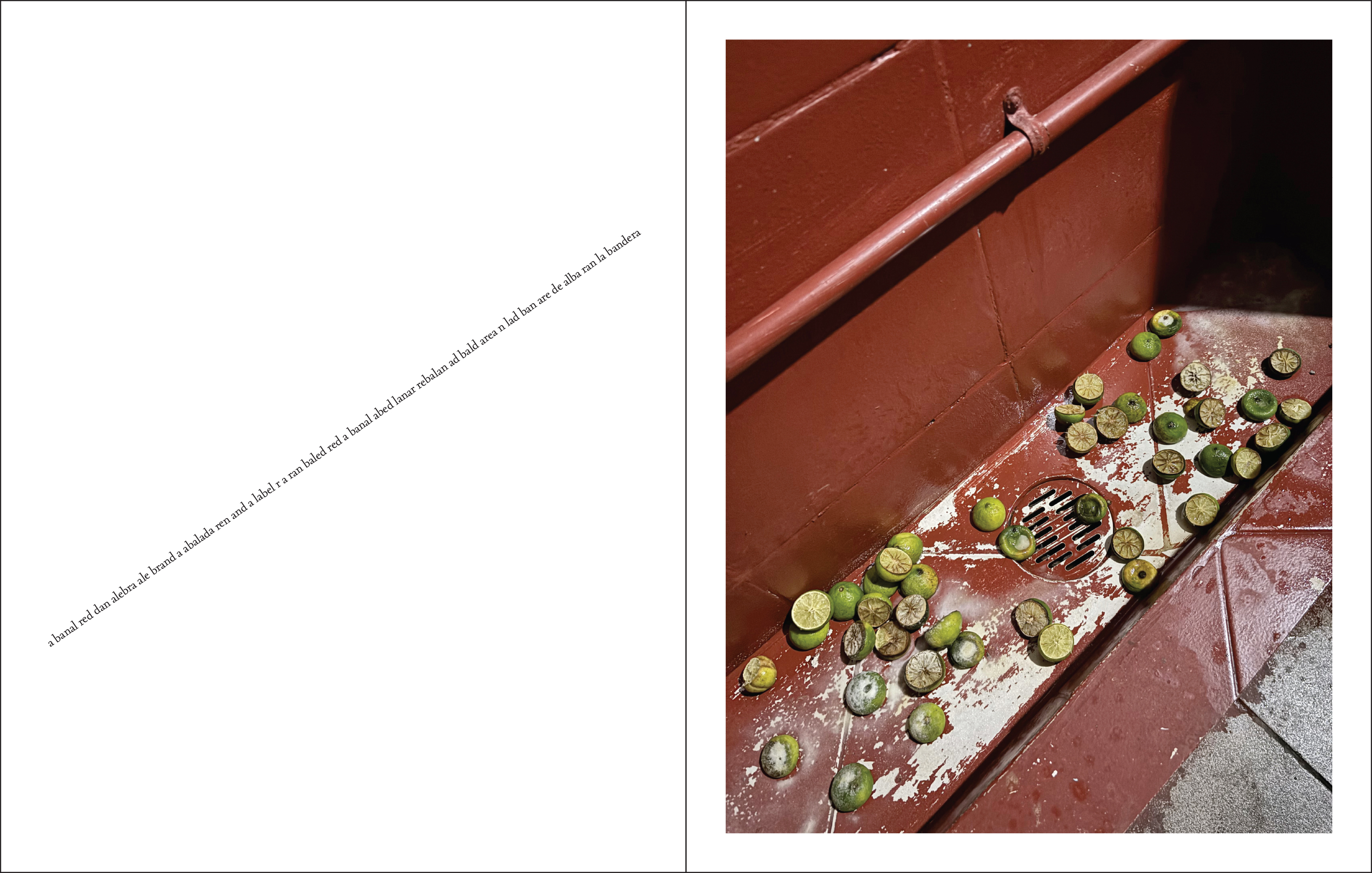
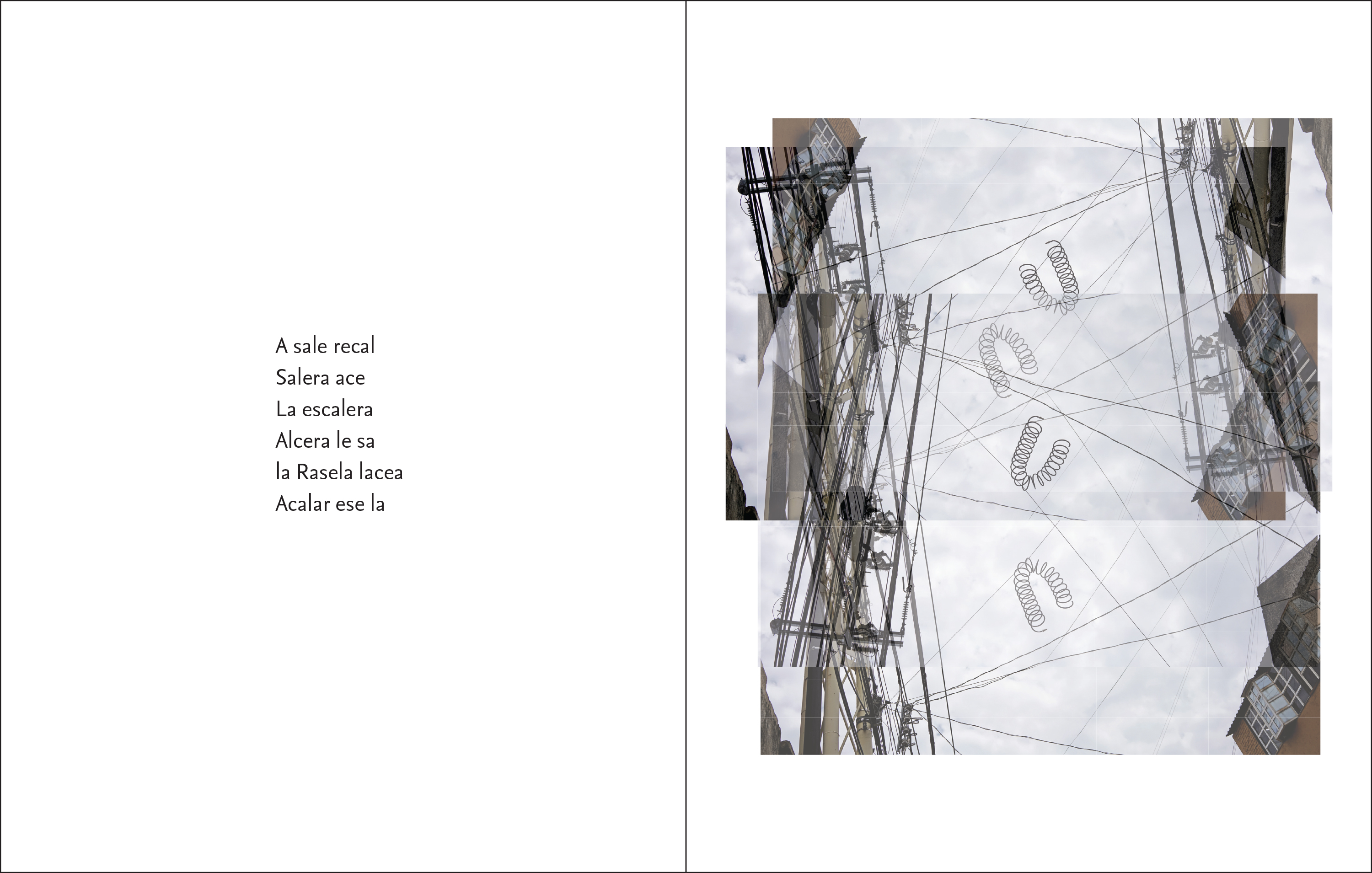
Impounded [birth certificate], by David Schulz. Published by Shibboleth, Emic Units, 32 pages, Digital printing, Perfect bound, 9 x 12”, Complete box set of 50 zines from 50 different artists, 2023.
This video describes my project, Impounded [birth certificate], part of Emic Units, published by Shibboleth (Milan), which was presented at the New York Art Book Fair, spring, 2024.
Description of Emic Units project from the Shibboleth website: The box contains fifty visual interpretations of the term shibboleth, a word to which no language can lay claim, a hard-to-falsify linguistic sign used to winnow identities in order to establish policies and borders. Each of the fifty booklets is by a different author and is conceived as an exercise book for the social projects we run among the different communities with whom we collaborate long-term.
Shibboleth is the first chapter of “Emic Units”, a series about the migration of ideas exploring how far the confines of meaning can be stretched geographically, historically, metaphorically and visually.
The Library, by David Schulz. Light Rail Works, 112 pages,
Digital printing, Perfect bound, 9 x 12”, edition of 100, 2019.
To purchase the book, please email
davidschulzworks at gmail dot com. $75.
The Library is a meditation on realization and loss through the practice of reading. After his father’s unexpected death, the author searched for him in selected books from his father’s library in an attempt to access and preserve his (and his father’s) memories and thoughts as well as to give shape to questions about a disturbing past.
A fugue-structure assembles photographs of books from his father’s library alongside the author’s prose-poems which respond to his reading of those books. As photographs of books bear witness to the objects with which the father had physical contact, the texts emanating from those objects imagine representations of his thoughts as he read. Photo-collages of forests represent the visual thoughts of the author as he attempted to read his own father, who was often obscured by the enigmas of despair and anxiety.
The multiple voices and narrative perspectives encountered in the books from the library expose a series of formative events within and surrounding the father’s life. They also inspire the author to create an imagined history in the resulting prose-poems.
The culminating book—a portrait in absentia—creates a parallel reality to his father, one that masks actual memories and obstructs his father’s voice as it probes the space between documentation and invention, and between the imperative to understand and the impossibility of knowing.
The Library has a second iteration consisting of books referenced in The Library that have been un-bound and reassembled onto a new substrate with binding thread. Onto these pages, one of the forest collages (also from The Library) is printed and distributed over the entire assemblage of pages. This expanded book form includes the corresponding prose-poems printed along the bottom edge of the new assemblages.
The 2 pieces illustrated below are: Akhmatova, 55” x 40”; and Bulgakov, 37” x 31”. The frames are made of rough-hewn chestnut that was harvested and milled 300 years ago and used in the original farm building in Connecticut where the source images for the forest collages were made.
Below the assemblages: Double-paged spreads from The Library.
Digital printing, Perfect bound, 9 x 12”, edition of 100, 2019.
To purchase the book, please email
davidschulzworks at gmail dot com. $75.
The Library is a meditation on realization and loss through the practice of reading. After his father’s unexpected death, the author searched for him in selected books from his father’s library in an attempt to access and preserve his (and his father’s) memories and thoughts as well as to give shape to questions about a disturbing past.
A fugue-structure assembles photographs of books from his father’s library alongside the author’s prose-poems which respond to his reading of those books. As photographs of books bear witness to the objects with which the father had physical contact, the texts emanating from those objects imagine representations of his thoughts as he read. Photo-collages of forests represent the visual thoughts of the author as he attempted to read his own father, who was often obscured by the enigmas of despair and anxiety.
The multiple voices and narrative perspectives encountered in the books from the library expose a series of formative events within and surrounding the father’s life. They also inspire the author to create an imagined history in the resulting prose-poems.
The culminating book—a portrait in absentia—creates a parallel reality to his father, one that masks actual memories and obstructs his father’s voice as it probes the space between documentation and invention, and between the imperative to understand and the impossibility of knowing.
The Library has a second iteration consisting of books referenced in The Library that have been un-bound and reassembled onto a new substrate with binding thread. Onto these pages, one of the forest collages (also from The Library) is printed and distributed over the entire assemblage of pages. This expanded book form includes the corresponding prose-poems printed along the bottom edge of the new assemblages.
The 2 pieces illustrated below are: Akhmatova, 55” x 40”; and Bulgakov, 37” x 31”. The frames are made of rough-hewn chestnut that was harvested and milled 300 years ago and used in the original farm building in Connecticut where the source images for the forest collages were made.
Below the assemblages: Double-paged spreads from The Library.
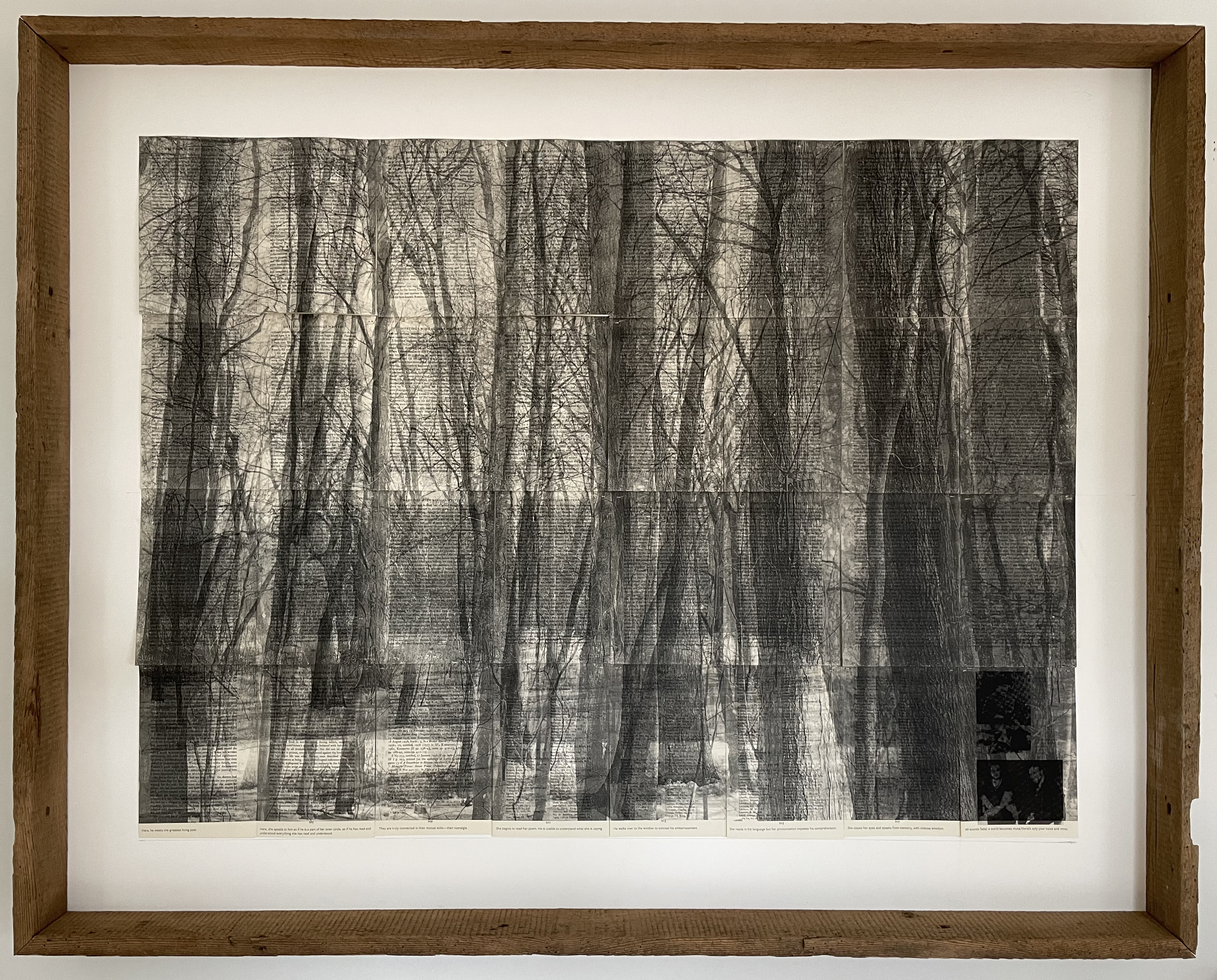







15 Views of Mount Rainier, by David Schulz,
Light Rail Press, 38 pages, Black and White,
Saddlestitched, 7 x 9″, Print-on-Demand Edition
(open), 2011, ISBN# 978-0-9828666-2-7.
To purchase,please email davidschulzworks
at gmail dot com. $25.
15 Views of Mount Rainier is a book of typographic drawings of Mount Rainier rendered with text acquired from email SPAM.
![]()
![]()
![]()
Light Rail Press, 38 pages, Black and White,
Saddlestitched, 7 x 9″, Print-on-Demand Edition
(open), 2011, ISBN# 978-0-9828666-2-7.
To purchase,please email davidschulzworks
at gmail dot com. $25.
15 Views of Mount Rainier is a book of typographic drawings of Mount Rainier rendered with text acquired from email SPAM.
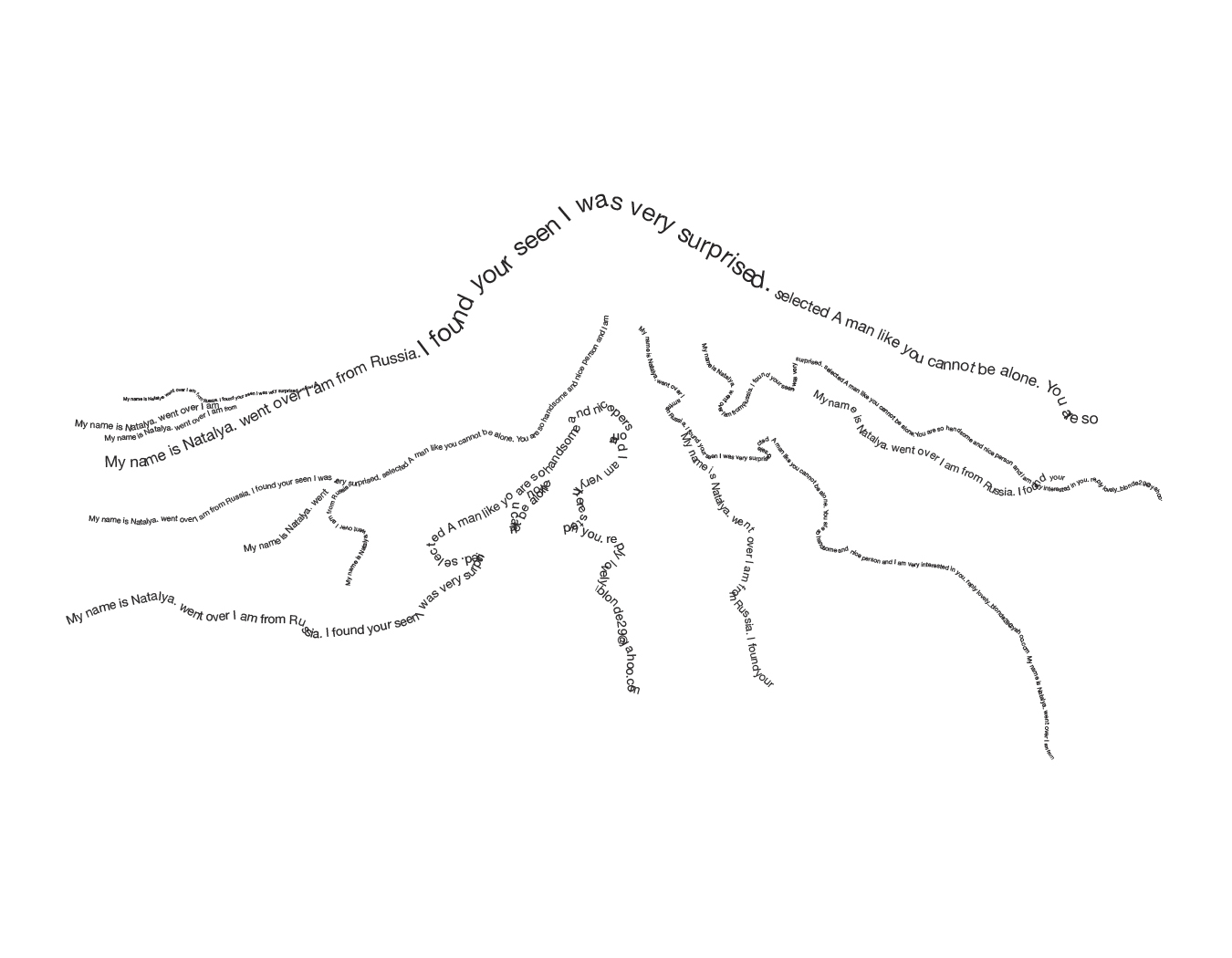
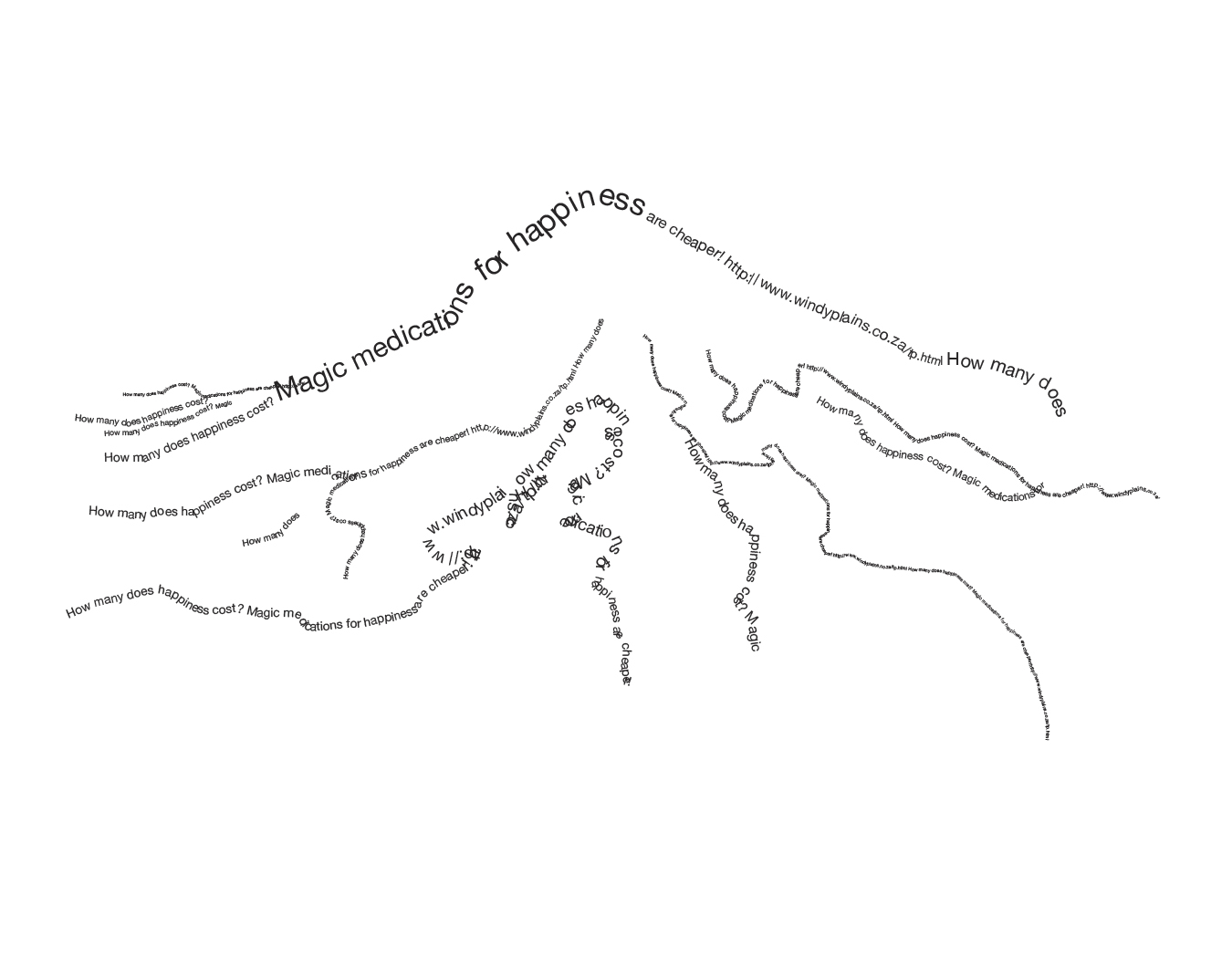
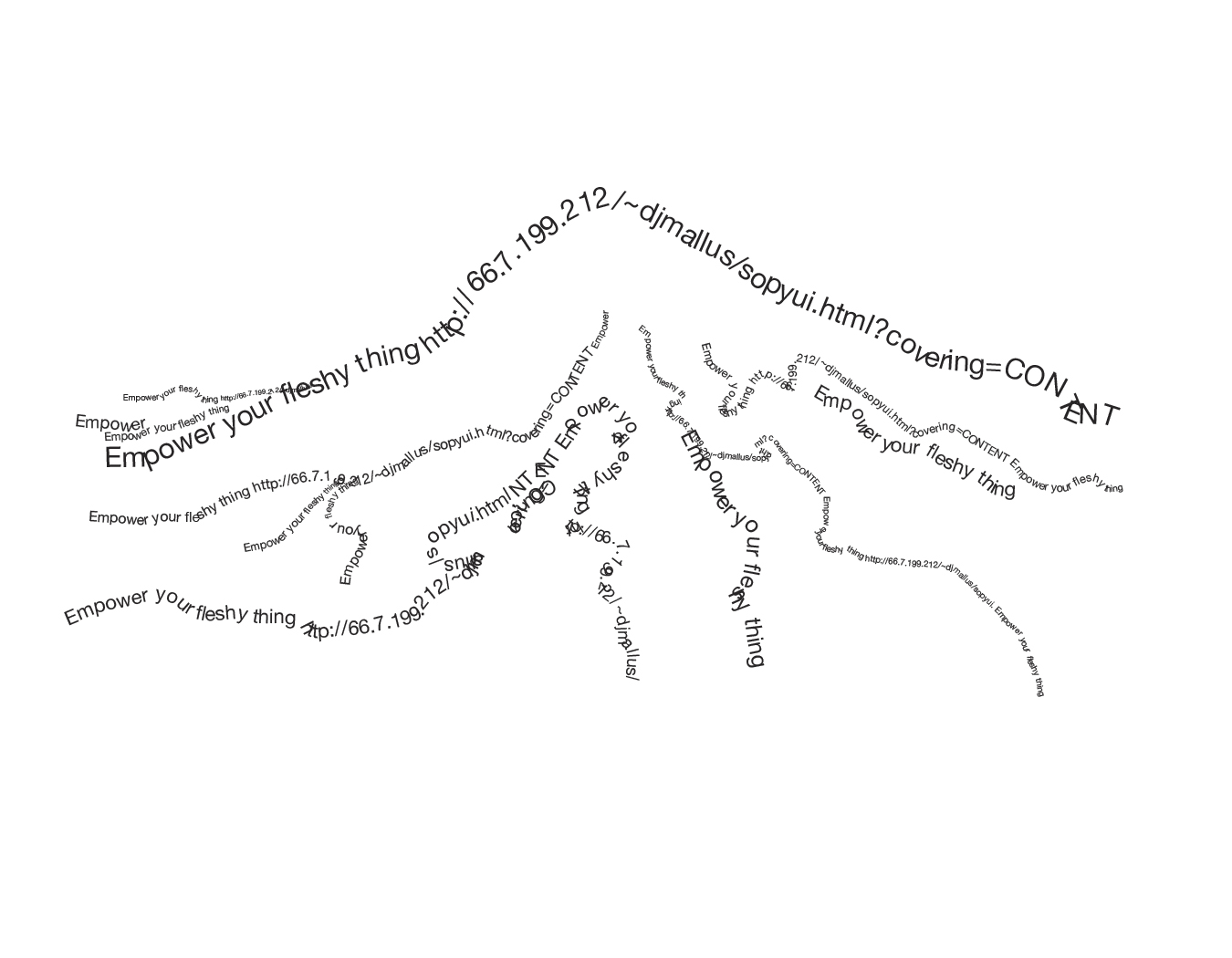
How The West Was Won. Copyright Applied For.
By David Schulz, Light Rail Works,
ISBN# 978-0-9828666-3-4, 108 pages, Digital Offset
Press (Indigo), Casebound, 7.5 x 9.5”,
edition of 100, 2013. To purchase, please email
davidschulzworks at gmail dot com. $50.
How The West Was Won. Copyright Applied For. investigates the roles of archived documents and literary genres in the creation, preservation, and reconstruction of cultural memory and historical representation.
The Pioneer Pageant of 1923/24 was a theatrical production involving over 3000 local citizens in Walla Walla, Washington, offering a romanticized narrative of “how the west was won.” Archived materials from the Pageant illuminate an expanded field of performance where a strong relationship exists between the ordering structures of material documents and immaterial genres in the narrativization of history.
Comprised of postcards and silver gelatin prints in photo-albums, contracts, meeting minutes, advertising agency reports, newspaper clippings, scripts, scripting notes, and correspondences, How The West Was Won. Copyright Applied For. presents an allegory of history through the executive, administrative, and creative processes of tableau theater by presenting the material conditions out of which the theater came to be in relation to the American myth of “how the west was won.”
This allegory is given further meaning by a series of devised Haiku poems that are sourced from a separate archive of immigration accounts. Individual phrases within each Haiku are based on the observed frequency of recurring events they describe within their stories.
This book project was partly funded by the Penrose Library at Whitman College.
Below: Double-paged spreads from How The West Was Won. Copyright Applied For.
![]()
![]()
![]()
![]()
![]()
By David Schulz, Light Rail Works,
ISBN# 978-0-9828666-3-4, 108 pages, Digital Offset
Press (Indigo), Casebound, 7.5 x 9.5”,
edition of 100, 2013. To purchase, please email
davidschulzworks at gmail dot com. $50.
How The West Was Won. Copyright Applied For. investigates the roles of archived documents and literary genres in the creation, preservation, and reconstruction of cultural memory and historical representation.
The Pioneer Pageant of 1923/24 was a theatrical production involving over 3000 local citizens in Walla Walla, Washington, offering a romanticized narrative of “how the west was won.” Archived materials from the Pageant illuminate an expanded field of performance where a strong relationship exists between the ordering structures of material documents and immaterial genres in the narrativization of history.
Comprised of postcards and silver gelatin prints in photo-albums, contracts, meeting minutes, advertising agency reports, newspaper clippings, scripts, scripting notes, and correspondences, How The West Was Won. Copyright Applied For. presents an allegory of history through the executive, administrative, and creative processes of tableau theater by presenting the material conditions out of which the theater came to be in relation to the American myth of “how the west was won.”
This allegory is given further meaning by a series of devised Haiku poems that are sourced from a separate archive of immigration accounts. Individual phrases within each Haiku are based on the observed frequency of recurring events they describe within their stories.
This book project was partly funded by the Penrose Library at Whitman College.
Below: Double-paged spreads from How The West Was Won. Copyright Applied For.




